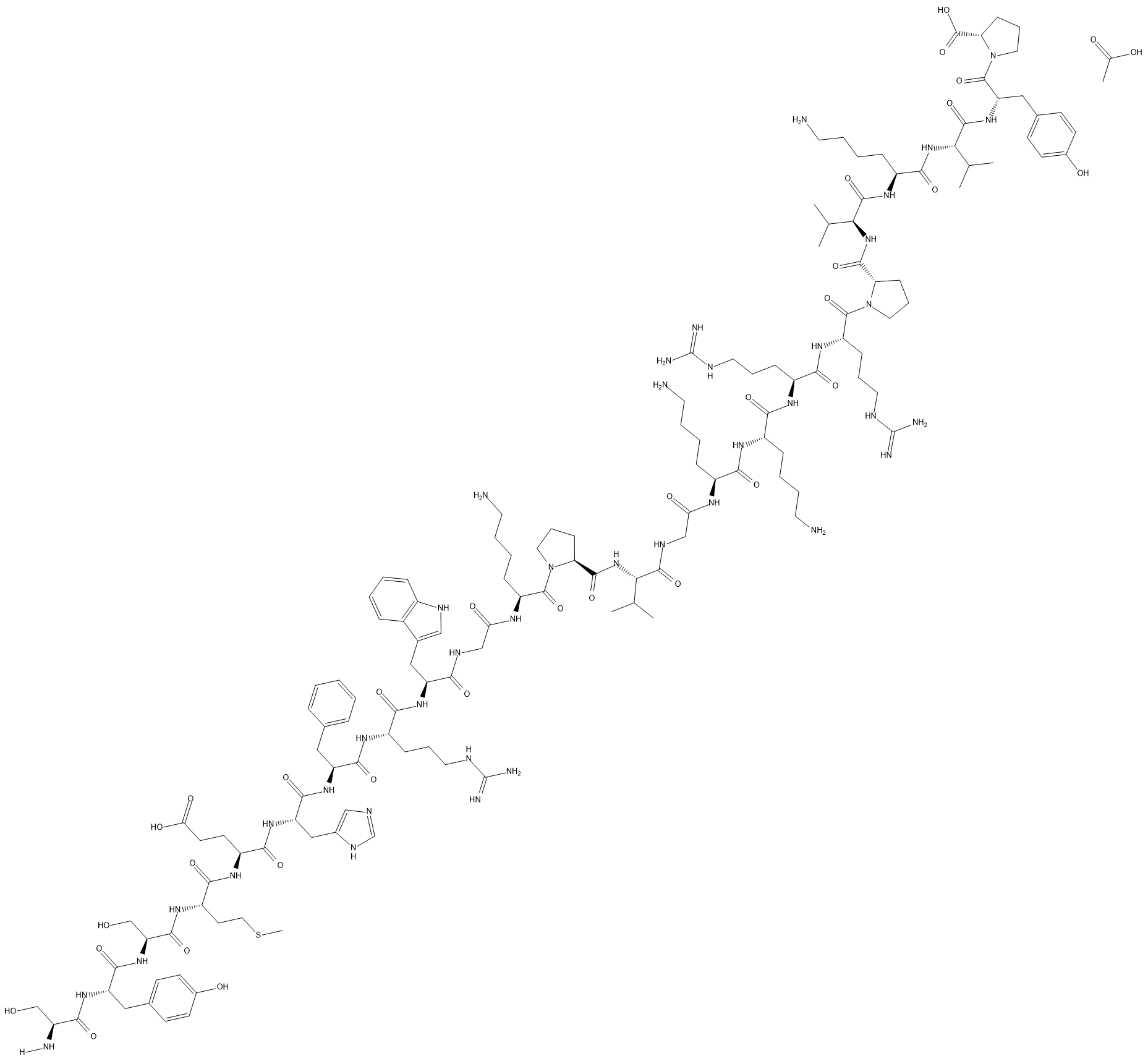Cosyntropin (acetate) (Synonyms: ACTH (1-24), Adrenocorticotropic Hormone 1-24, Tetracosactide) |
| Catalog No.GC18804 |
Cosyntropin (acetate) is a synthetic peptide stimulating the release of corticosteroids such as cortisol from the adrenal gland.
Products are for research use only. Not for human use. We do not sell to patients.

Cas No.: 60189-34-6
Sample solution is provided at 25 µL, 10mM.
Cosyntropin is a synthetic peptide analog of adrenocorticotropic hormone (ACTH) residues 1-24. It increases the plasma concentration of hydrocortisone in mares more rapidly and consistently than natural ACTH 1-24. Formulations containing cosyntropin have been used to diagnose adrenal deficiencies in humans, dogs, and horses.
Review for Cosyntropin (acetate)
Average Rating: 5 (Based on Reviews and 3 reference(s) in Google Scholar.)
Review for Cosyntropin (acetate)
GLPBIO products are for RESEARCH USE ONLY. Please make sure your review or question is research based.
Required fields are marked with *




















